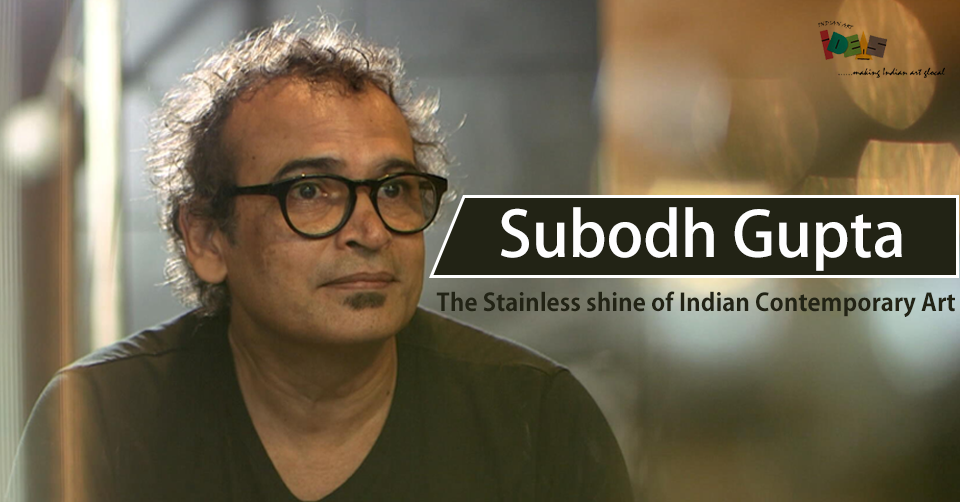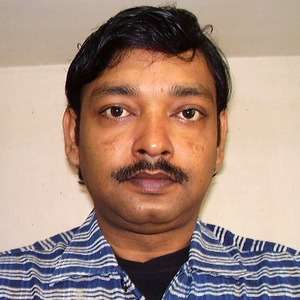
If you are an art lover or an art collector who loves to buy contemporary art, then you will agree with us that the contemporary art world is vibrant and booming as never before. It is a global industry in its own right. Over the last two decades contemporary art witnessed some drastic changes. Now, contemporary art is all about artists trying to push boundaries, ask questions, and see the world differently. One such artist who has brought the name of Indian Contemporary Art on the international map is Subodh Gupta.
Subodh is one of the most exciting and celebrated artists in the world today. He is immensely popular amongst people who adore striking artworks and buy contemporary art. He was born in Bihar in the East of India and was raised in a rural railway family. As a youth he became fascinated with the local travelling theatre before deciding that it would be his newly discovered talent for painting which would transport him via art school out of the countryside and into the heart of Indian and International contemporary art world. Having become a trained painter, it was his move into the medium of large scale sculptures and installation works which brought him to the attention of global audience.
Art collectors who love to explore and buy contemporary art are of the opinion that Subodh completely challenges the history of Indian sculpture and installation. He has helped to direct international audience’s attention towards Indian Contemporary Art. One may call him the godfather of contemporary art in India. Subodh has become renowned for walking down the memory lanes of his childhood. What he has learned in his early life has influenced his artworks immensely. He raises mundane everyday objects and includes them in stunningly inventive and innovative works. His works are intensely spectacular. Art critics are of the opinion that 100 years from now, Subodh will stand as the historic shift that Indian artwork took in the nineties.
As a child, he used to visit local fairs where he enjoyed watching theatre. He was so fascinated by these acts that he decided to become an actor and joined theatres. It was during this brief period in theatre that Subodh discovered his talent for drawing and painting when he was asked to make the advertising posters. He promptly enrolled in the local art school where he could study both – theatre and art. The transition from acting to painting happen when he realized that as a painter he did not need any light, camera, director and producer and that he was his own director, actor and audience. Had he not experienced that kind of scenario in his life, the entire conceptual framework of his work would have been completely different.
By 1993, Subodh was a struggling painter and had moved to Delhi. It was during this period that he met a young UK born painter who he subsequently married. His wife, Bharti Kher, who motivated Subodh to become one of the leading likes in the world of award winning, international contemporary artists. It was after meeting Bharti that Subodh decided to change mediums and try his hands at sculptures. For inspirations he would tour rural areas in India. In his words, whenever he has to create a new artwork, he goes back to his roots. His works have a sense of nostalgia associated with them. So many of his works are inspired and based on his childhood. His first installation, ‘29 Mornings’, features 29 stools. He holds stools very close to his heart as they are an inseparable part up of his childhood. He used to have his meals on wooden stools. ‘29 Mornings’ was the breakthrough in his artistic career; everything started from this installation.
Following on from the success of ‘29 Mornings’ considered by many to be his breakthrough piece, Subodh continued to walk down the fertile memories of his childhood. Once again he had grasped another tangible memory from his childhood, this time employing it in a piece called ‘Pure’. He collected a number of everyday household objects from his neighbors and sunk them in a filed constructed of cow dung.
After seeing his early work, it won’t be an exaggeration to say that through his work he relooks at his entire upbringing on one side and on other side he tries to re-invent medium and material not in a conventional fashion, but in an amalgamation that suits his conceptual framework. No doubt, he is one of the most successful Indian Contemporary artists in the world.





















